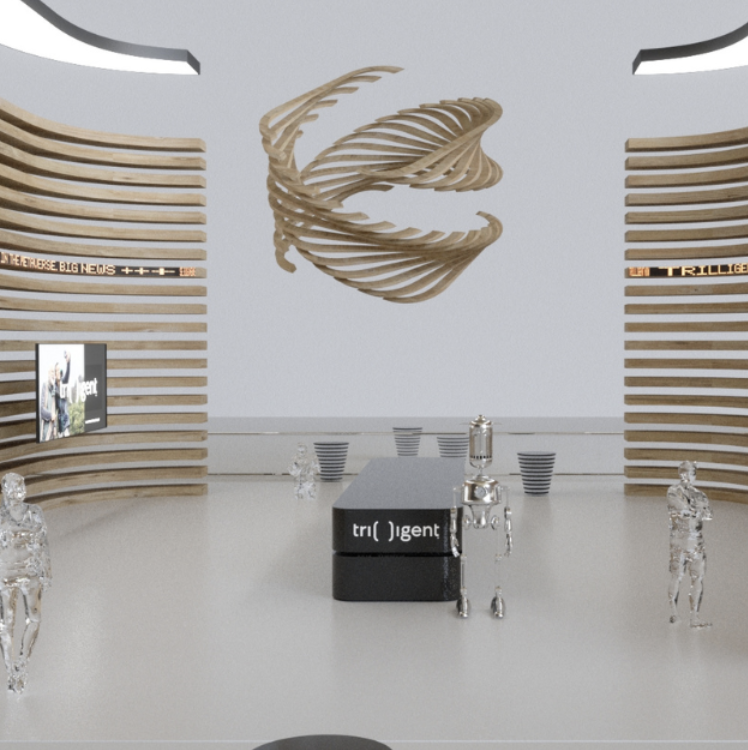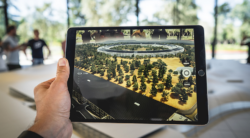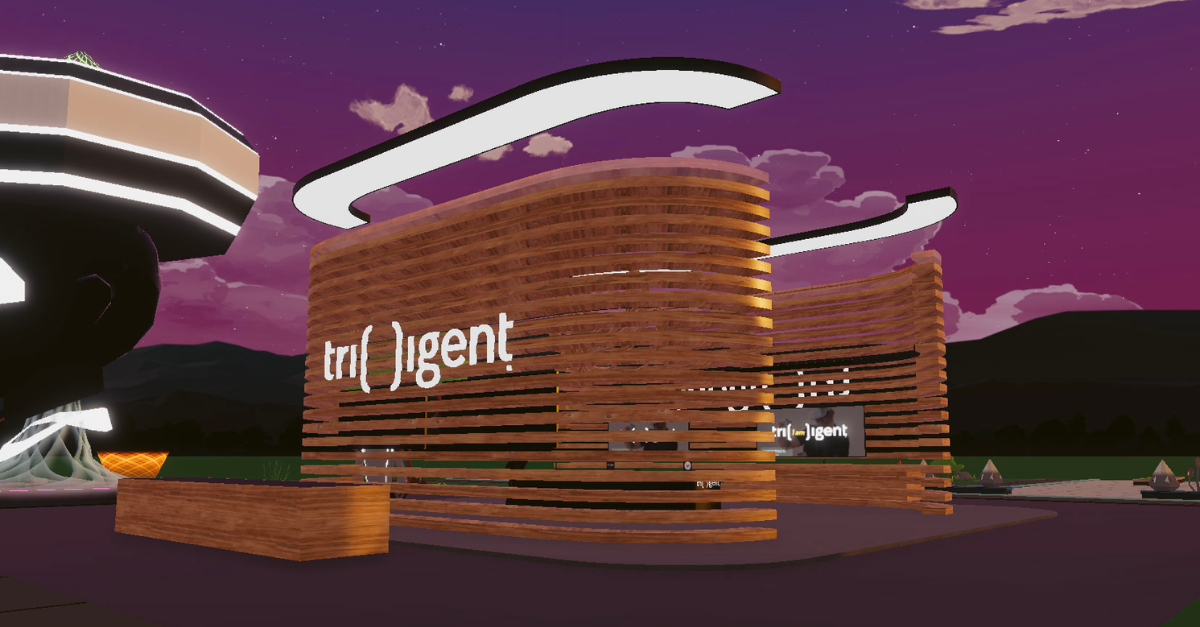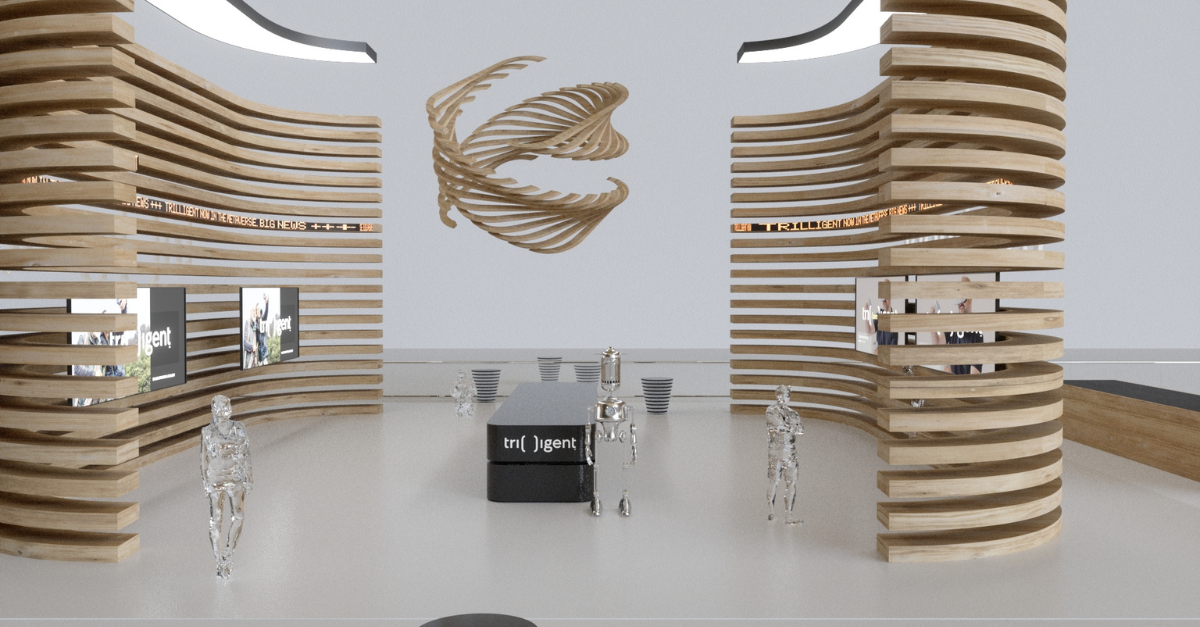
Trilligent’s Journey to the Metaverse
At Trilligent, we pride ourselves on working without walls. While we don’t lease physical office space, we believe that collaboration is essential to maximizing creativity, mentorship, and growth. Our commitment to collaboration – coupled with our clients’ boundary-breaking efforts to build #web3 and shape the next generation of computing platforms – made the metaverse a natural home for our global headquarters.
We dedicated 2022 to designing and building Trilligent’s first metaverse headquarters – an information pavilion intended to showcase the Trilligent brand and invite visitors to connect with our team. While our ambitions in the metaverse extend into 2023 and beyond, we’ve distilled a few key lessons learned during our first foray into metaverse construction.
Lesson 1: Choose the platform and parcels best suited to your specific metaverse goals.
Before becoming virtual land owners, we evaluated the universe of available metaverse platforms, spending time in The Sandbox, Decentraland, Roblox, and Horizon Worlds to find the best home for Trilligent’s information pavilion. For our first-ever build, we gave preference to mature platforms with active user bases that would allow us to customize a space to our exact brand specifications. We decided on Decentraland for a few reasons:
- Its broad popularity and active user community;
- Its relative longevity in the market, a testament to its durability and continued relevance;
- Its software development kit (SDK), which allows for advanced designs and animations, ultimately allowing us to fully customize our space; and,
- Its accessibility by internet browser, which makes it an easy onramp for metaverse neophytes (or anyone holding out on purchasing a headset).
Our next order of business was to identify the specific land parcels we wished to purchase. Here, a new set of considerations emerged, including location, cost, and size. We leaned on our development partners to advise on the number of parcels we’d need to house our pavilion (four). Armed with this information, we then toured Decentraland’s various districts in search of a property in a business-centered neighborhood which might provide opportunities for engagement and networking. We were pleased to find one that fit the bill: two adjacent two-parcel properties (which we combined into a four-parcel estate) neighboring Fidelity Investments and the metaverse Trade Center. Better yet, the property offered convenient road and plaza access, making it easily navigable by users and clients.
Everything we now know about property acquisition in the metaverse, we learned by doing. To others considering a similar investment, we’d recommend spending time at the outset of your search articulating your “need to haves” based on how you hope users will interact with your space. Lead with these criteria. And if you’re not yet sure what matters most to you, play tourist!
Lesson 2: Build for your audience.
While constructing a virtual headquarters – one which features teleportation and a talking robot, no less – was a first for the Trilligent team, the basic tenets of human-centered design proved reliable guides. One key takeaway from the many hours spent debating design decisions was the importance of familiarity as a predictor of user comfort.
For many visitors to our space (be they clients, prospective employees, or members of the media), the metaverse is uncharted territory. Our challenge was to design a space that takes advantage of the unique features made possible in the metaverse while still providing an intuitive user journey.
While the laws of space and reason are not essential factors in the development of metaverse infrastructure, we nevertheless relied on traditional architectural styles and familiar cues to encourage visitors to interact with our content as intended. For example, we chose to display information on screens hung throughout the pavilion, trusting that visitors would intuitively approach the screens with an expectation to receive information.
While the realm of possibilities is near infinite in the metaverse, be mindful of what your target audience will appreciate and what will be a distraction.
Lesson 3: Design and execute a rigorous quality assurance testing process before opening your space to the public.
Our first experience building in the metaverse was rife with “unknown unknowns,” complications we didn’t anticipate or even know enough to worry about. Chief among them: a major October update to Decentraland’s SDK, which unexpectedly compromised the functionality of our pavilion and forced us to delay our public launch event. Needless to say, one of the most important things we learned during this process, we learned the hard way: that rigorous and regular quality assurance testing is absolutely essential before opening your space to the public.
In parallel with re-coding failed elements of our pavilion, we spent much of Q4 designing and executing an intensive quality assurance testing process to ensure proper pavilion functionality across regions, computer types, browsers, times of day, and group sizes. We tested every interaction a user can have in our pavilion from North America, the Middle East, and Europe; from Google Chrome, Firefox, and Safari; from Mac and Windows desktop clients; and in groups of 5, 10, and 20 – totaling more than 200 test combinations.
When tests failed, we determined whether the issue in question could be remediated through code changes, or whether the problem stemmed from Decentraland itself (such as the Safari browser’s general incompatibility with Decentraland). In those cases, we adapted our user manual to reflect updated best practices for a seamless experience.
First movers in the #metaverse face the uncertainty and unpredictability associated with new technology. While the risks of early adoption can’t be eliminated, they can be mitigated. With that mindset, we’d advise any company with plans to build in the metaverse to think carefully about quality assurance testing throughout the development process. Understand what a functioning space should look like, visualize the ideal end state, consider the myriad pathways by which users will access your space, and develop test criteria accordingly.
As we look forward to welcoming guests back into our pavilion this year, we also have our sights set on new and expanded opportunities for connection and collaboration. In particular, we’re eager to explore more immersive mediums, like Meta’s Horizon Worlds, which promises a more authentic and interactive experience for our remote team members. Regardless of which new platforms we explore, the lessons learned from buying, designing, and building in Decentraland will surely be transferable. We hope you find them helpful, too, and that we’ll see you soon in the metaverse.
RELATED ARTICLES






